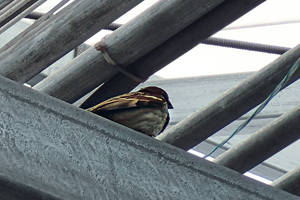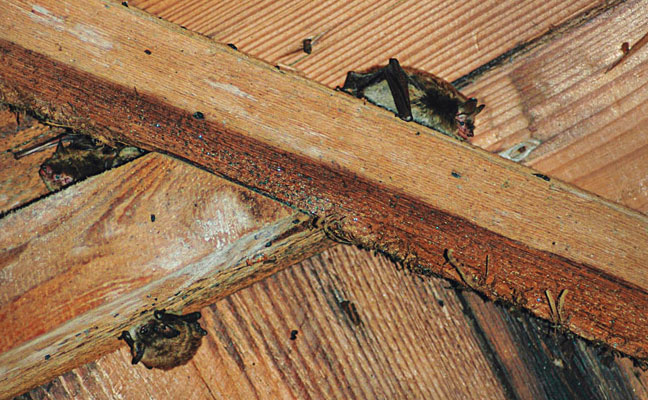Birds and bats in attics are high-liability pests. Not only can they cause significant structural damage and create hazardous messes, but they are also vectors for a host of associated pests, such as mites, bat bugs and fleas. Managing these pests requires specialized knowledge and strict adherence to local and federal regulations.
This article, part of our Top-floor tactics: The PMP’s ultimate guide to attic pest management, details the inspection and treatment protocols for birds, bats and the parasites they introduce.
Key takeaways
- High-liability pests: Birds and bats are high-stakes jobs due to the parasites (mites, bat bugs) they carry and the legal protections (e.g., Migratory Bird Treaty Act) that govern them.
- Bat exclusion: Bat control is exclusion, not elimination. It must be done using one-way doors and after the maternity season to avoid trapping flightless young.
- Bird control: Bird management involves a combination of trapping, repellents and robust exclusion (netting and spikes) to prevent re-entry.
- Treat for parasites: Always treat for associated pests after removing the primary host. Once their main food source is gone, parasites will migrate into the living space in search of a new host.

Birds (pigeons, starlings, sparrows)
Birds can gain entry to attics through damaged vents or soffits, creating nests that are both a fire hazard and a source of contamination.
Inspection cues for birds:
- Nesting Material: Look for dried grass, twigs and feathers, especially near vents or in eaves.
- Droppings: Large accumulations of bird droppings are a key sign.
- Noise: Clients will report hearing chirping, scratching, or flapping.
- Entry Points: Visually inspect the exterior for damaged vent covers, holes in the roofline, or gaps in the soffit.
Treatment strategies for birds:
- Trapping & removal: Use live traps or, where permitted, bird-specific repellents. All actions must be in accordance with the Migratory Bird Treaty Act and local laws.
- Exclusion: The primary long-term solution is to repair all damage and install bird-proof exclusion materials, such as hardware cloth over vents, bird netting, or spikes on ledges.
- Sanitization: After birds are removed, all nesting material and droppings must be safely removed (using proper PPE) and the area must be sanitized.

Bats
Bats are highly beneficial animals and are often protected by state and federal law. “Bat control” is strictly “bat exclusion,” and a deep understanding of their biology is required.
Inspection cues for bats:
- Droppings (Guano): Piles of guano, which will crumble and reveal shiny insect parts, are a key indicator.
- Stains: Look for greasy, dark rub marks around small entry points (as small as 3/8 of an inch).
- Noise: Clients may report high-pitched “squeaking” or scratching, usually at dusk or dawn.
Treatment strategies for bats:
- Timing is critical: Bat exclusion must not be performed during the maternity season (typically late spring to late summer), as this will trap the flightless young inside, leading to their death and a severe odor/sanitation problem.
- One-way doors: Identify all primary entry points and seal all secondary holes. Install one-way doors or exclusion tubes over the primary entry points.
- Removal: Allow several days for all bats to exit through the one-way doors.
- Final exclusion: Once all activity has ceased, remove the one-way devices and permanently seal the final entry points.
Associated pests (Mites and bat bugs)
Once the primary host (birds or bats) is removed, any parasites they were feeding on will seek a new host—often the human occupants of the structure.
Inspection cues for associated pests:
- Look after removal: The “inspection” for these pests is often a pro-active treatment, as they are too small to see easily.
- Client reports: Be prepared for client calls about “mysterious bites” 7-10 days after a bird or bat removal if this step is skipped.
Treatment strategies for associated pests:
- Timing: The ideal time to treat is immediately after the hosts have been removed but before the final exclusion and cleanup.
- Application: Apply an appropriately labeled liquid or aerosol insecticide (like a pyrethrin) to the infested attic space, focusing on nesting areas and to cracks and crevices in the living space directly below the attic.
Conclusion
Managing birds, bats and their associated pests is a highly technical and high-liability service. It requires PMPs to act as not only technicians but also as experts in wildlife biology and local regulations. A successful job protects the client’s property from the primary pest and protects their health from the parasites they leave behind.
Explore the full attic pest guide
This article is the central hub for our complete guide to attic pests. Dive deeper into specific control strategies for the pests you encounter most often.
- Attic pest guide (Part 1): Wood-destroying insects
- Attic pest guide (Part 2): common and fabric pests
- Attic pest guide (Part 3): Stinging and fall-invading pests
- Attic pest guide (Part 4): Rodents and wildlife
- Attic pest guide (Part 5): Birds and associated pests
- Attic pest guide (Part 6): Six reasons why pests love attics
Leave A Comment